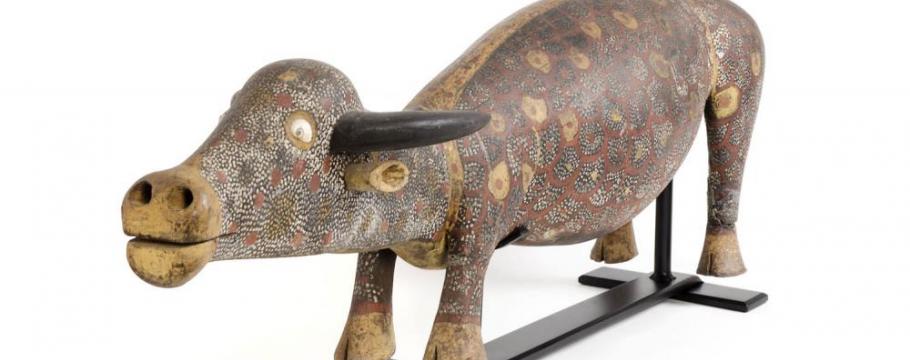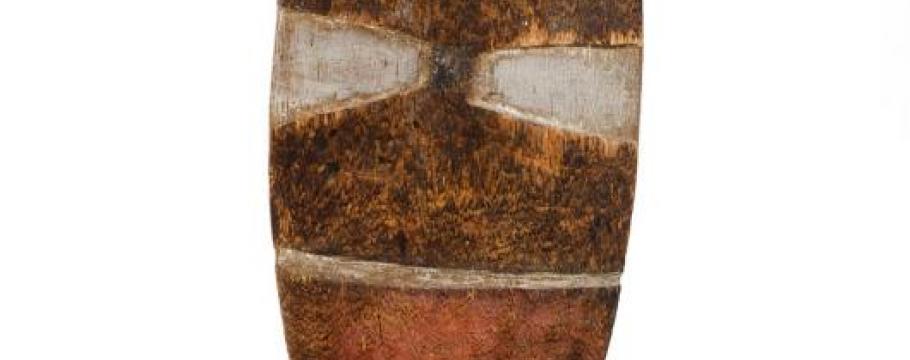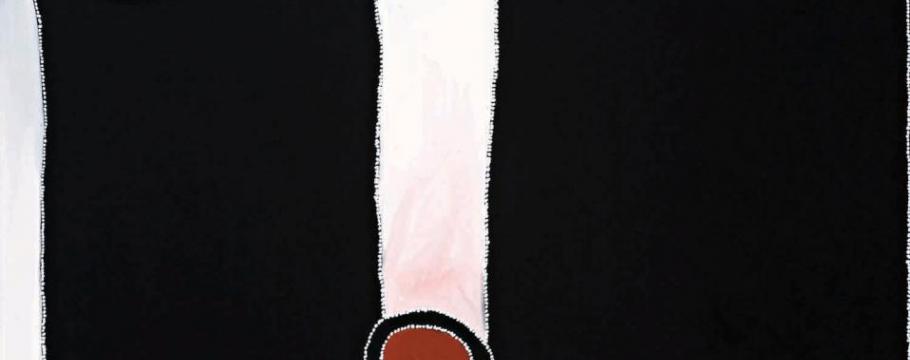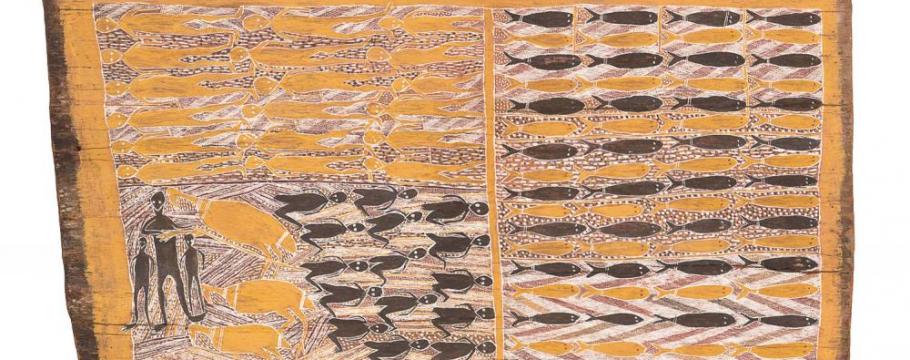









Stand alone multi-vendor indigenous auction a Mossgreen first
Author: Richard Brewster | Posted: 18th July, 2014
Mossgreen’s first stand-alone multi-vendor Australian Indigenous and Oceanic Art auction will be held from 6.30pm Tuesday July 22 at 926-930 High Street, Armadale.
The auction, which continues from 2.30pm the next day, is planned to become an annual event in July each year – giving collectors a special sale to look forward to rather than being bombarded with ongoing mediocre events.
Mossgreen’s head of Australian indigenous art D’Lan Davidson says the auction contains some of the best indigenous shields (sourced from a private collection in the United States) he has ever seen.
“This is of particular note as, together with two other important shields (lots 10 and 23), rarely has a collection of shields with such age, beauty and provenance been seen for sale on the secondary market,” he said.
One of the shields is a fine, early stone-carved parrying shield typical of those made in Darling, Lachlan and Murrumbidgee Rivers region of New South Wales.
The shields were used for defending the holder from club blows in close combat. The repeated zig-zag motifs (again typical of the region) present a visually shimmering appearance that enhances the physical and spiritual efficacy of the weapon.
A rainforest shield from Mareeba in north Queensland is historically significant because it was collected by John Atherton (1837-1913), the grazier and overlander after whom the tablelands between the Palmer River and the headland of the Burdekin River in the north of the State are named.
In the 1850s, Atherton first ventured north into Queensland and by 1877 had settled at Emerald End near Mareeba on the banks of the Barron River, where he remained until he died.
The auction contains a boomerang made and used by the King of Murrumbidgee, and recently discovered in the United Kingdom.
Artefacts dating from the 19th century that can be aligned to their original indigenous makers are particularly rare – and this fighting (non-returning) boomerang is understood to have belonged to a young Aborigine called Wellington, said to be the King of the Murrumbidgee who frequented the Yarralumla area.
Now an inner Canberra suburb, in the 1840s Yarralumla was the home of Sir Terence Aubrey Murray who became a member of the Legislative Assembly of New South Wales.
A major auction highlight is the carved buffalo by Tiwi artist Albert Croker.
A member of the area’s “hall of fame”, Croker most original sculptures depict painted buffaloes and buffalo heads.
Water buffalo were introduced in the 19th century to the Tiwi Islands from East Timor through the establishment of the short-lived Fort Dundas in the 1820s on Bathurst Island.
Once the fort was abandoned, the buffalo became feral and Croker’s sculptures have an affinity with buffalo imagery of the Toraja people on Sulawesi in modern-day Indonesia.
Another important piece is an early work (Djan’kawu at Yalan’bara) by Wandjuk Marika (1927-1987), one of the leading Yolungu artists of his generation, while three key Papunya boards (lots 53-55) remind collectors of the important transition from ethnographic works to contemporary paintings under the influence of schoolteacher Geoffrey Barden.
Emily Kngwarreye’s Untitled 1993 work was commissioned by mercurial art advisor Rodney Gooch and was painted at the peak of her career, while enigmatic east Kimberley painter Paddy Bedford’s Jack Flood 2004 is one of the few large paintings left in his estate.





